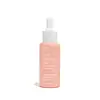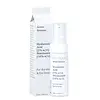What's inside
What's inside
 Key Ingredients
Key Ingredients

 Benefits
Benefits

 Concerns
Concerns

 Ingredients Side-by-side
Ingredients Side-by-side

Aloe Barbadensis Leaf Juice
Skin ConditioningWater
Skin ConditioningPropanediol
SolventPanthenol
Skin ConditioningSodium Lactate
BufferingGluconolactone
Skin ConditioningSodium Hyaluronate
HumectantHydrolyzed Sodium Hyaluronate
Skin ConditioningSodium Acetylated Hyaluronate
HumectantSodium Hyaluronate Crosspolymer
HumectantAcetyl Hexapeptide-8
HumectantSodium PCA
HumectantDiutan Gum
Carrageenan
Pentylene Glycol
Skin ConditioningCaprylyl Glycol
EmollientSodium Benzoate
MaskingPantolactone
HumectantEthylhexylglycerin
Skin ConditioningGlucose
HumectantCalcium Gluconate
HumectantSodium Hydroxide
BufferingLactic Acid
BufferingAloe Barbadensis Leaf Juice, Water, Propanediol, Panthenol, Sodium Lactate, Gluconolactone, Sodium Hyaluronate, Hydrolyzed Sodium Hyaluronate, Sodium Acetylated Hyaluronate, Sodium Hyaluronate Crosspolymer, Acetyl Hexapeptide-8, Sodium PCA, Diutan Gum, Carrageenan, Pentylene Glycol, Caprylyl Glycol, Sodium Benzoate, Pantolactone, Ethylhexylglycerin, Glucose, Calcium Gluconate, Sodium Hydroxide, Lactic Acid
Water
Skin ConditioningNiacinamide
SmoothingGlyceryl Oleate Citrate
EmulsifyingSimmondsia Chinensis Seed Oil
EmollientCaprylic/Capric Triglyceride PEG-4 Esters
EmollientHydrolyzed Hyaluronic Acid
HumectantButyrospermum Parkii Butter
Skin ConditioningCetearyl Alcohol
EmollientSodium Hyaluronate
HumectantPhospholipids
Skin ConditioningGlycine Soja Oil
EmollientGlycolipids
Skin ConditioningGlycine Soja Sterols
EmollientXanthan Gum
EmulsifyingLecithin
EmollientSclerotium Gum
Emulsion StabilisingPullulan
Sodium Citrate
BufferingPotassium Sorbate
PreservativePiroctone Olamine
PreservativeCitric Acid
BufferingWater, Niacinamide, Glyceryl Oleate Citrate, Simmondsia Chinensis Seed Oil, Caprylic/Capric Triglyceride PEG-4 Esters, Hydrolyzed Hyaluronic Acid, Butyrospermum Parkii Butter, Cetearyl Alcohol, Sodium Hyaluronate, Phospholipids, Glycine Soja Oil, Glycolipids, Glycine Soja Sterols, Xanthan Gum, Lecithin, Sclerotium Gum, Pullulan, Sodium Citrate, Potassium Sorbate, Piroctone Olamine, Citric Acid
 Reviews
Reviews

Ingredients Explained
These ingredients are found in both products.
Ingredients higher up in an ingredient list are typically present in a larger amount.
Sodium Hyaluronate is hyaluronic acid's salt form. It is commonly derived from the sodium salt of hyaluronic acid.
Like hyaluronic acid, it is great at holding water and acts as a humectant. This makes it a great skin hydrating ingredient.
Sodium Hyaluronate is naturally occurring in our bodies and is mostly found in eye fluid and joints.
These are some other common types of Hyaluronic Acid:
Learn more about Sodium HyaluronateWater. It's the most common cosmetic ingredient of all. You'll usually see it at the top of ingredient lists, meaning that it makes up the largest part of the product.
So why is it so popular? Water most often acts as a solvent - this means that it helps dissolve other ingredients into the formulation.
You'll also recognize water as that liquid we all need to stay alive. If you see this, drink a glass of water. Stay hydrated!
Learn more about Water